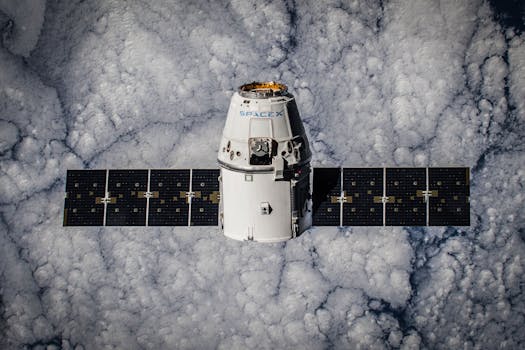
The Future of Satellites: Revolutionizing Global Communication and Exploration
The future of satellites is rapidly evolving, with advancements in technology and innovative applications transforming the way we communicate, navigate, and explore space. The focus keyword, satellites, is at the forefront of this revolution, enabling global connectivity, environmental monitoring, and scientific research. With the increasing demand for satellite-based services, the industry is experiencing significant growth, driven by investments in satellite technology and infrastructure.
Advancements in Satellite Technology
Recent advancements in satellite technology have led to the development of smaller, more efficient, and cost-effective satellites. The use of nanosatellites and cube satellites has become increasingly popular, offering a more affordable and accessible way to launch satellites into space. These small satellites are equipped with advanced sensors and communication systems, enabling them to provide high-quality images, data, and connectivity services. Furthermore, the development of reusable launch vehicles has significantly reduced the cost of launching satellites into space, making it more feasible for companies and organizations to launch their own satellites.
Applications of Satellites
Satellites have a wide range of applications, from global communication and navigation to environmental monitoring and scientific research. Satellite internet is becoming increasingly popular, providing connectivity to remote and underserved communities around the world. Satellites are also used for weather forecasting, climate monitoring, and disaster response, helping to save lives and reduce the impact of natural disasters. Additionally, satellites are used for space exploration, enabling us to study the universe and gain a deeper understanding of the cosmos.
Future Developments and Challenges
As the satellite industry continues to evolve, there are several future developments and challenges that need to be addressed. One of the major challenges is the increasing amount of space debris in Earth’s orbit, which poses a significant risk to operational satellites and spacecraft. To mitigate this risk, companies and organizations are developing debris removal technologies and implementing sustainable practices in satellite design and operation. Another challenge is the need for regulatory frameworks to govern the use of satellites and ensure that they are used responsibly and safely. Despite these challenges, the future of satellites looks promising, with many exciting developments on the horizon, including the launch of constellations of small satellites and the development of lunar and Mars missions.
Conclusion
In conclusion, the future of satellites is rapidly evolving, with advancements in technology and innovative applications transforming the way we communicate, navigate, and explore space. As the demand for satellite-based services continues to grow, it is essential that we address the challenges associated with the use of satellites and ensure that they are used responsibly and sustainably. With the increasing importance of satellites in our daily lives, it is exciting to think about the possibilities that the future holds for this technology.






